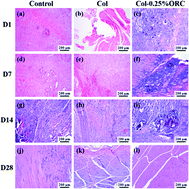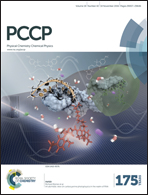Processing, characterization and hemostatic mechanism of a ultraporous collagen/ORC biodegradable composite with excellent biological effectiveness
Abstract
Collagen, one of the most biocompatible materials in nature, is widely used in wound healing and organ repair. However, the limited mechanical strength and biological effectiveness of collagen restrain its application as a hemostasis and filling material in medicine. To overcome these limitations, ultraporous collagen/oxidized regenerated cellulose (Col/ORC) composites were prepared. The results showed that the Col–0.25%ORC composite had optimal wettability, porosity, and water absorption. An MTT assay proved that the Col and Col/ORC composites possessed no cytotoxicity in living cells. Evaluation of the hemostatic time in vivo and the amount of bleeding in two injury models revealed that the Col–0.25%ORC composite has the most outstanding biological effectiveness and could be biodegraded completely without any inflammatory reaction after 3 weeks. The SEM micrographs showed that the fasciculate ORC fibers were evenly dispersed into the reticulate structure of the Col sponge. The FT-IR spectra of the Col–ORC composites were completely different from that of neat ORC, but similar to Col spectra. Moreover, a possible hemostasis mechanism was discussed based on ELISA analysis, coagulation function, and physicochemical properties.


 Please wait while we load your content...
Please wait while we load your content...